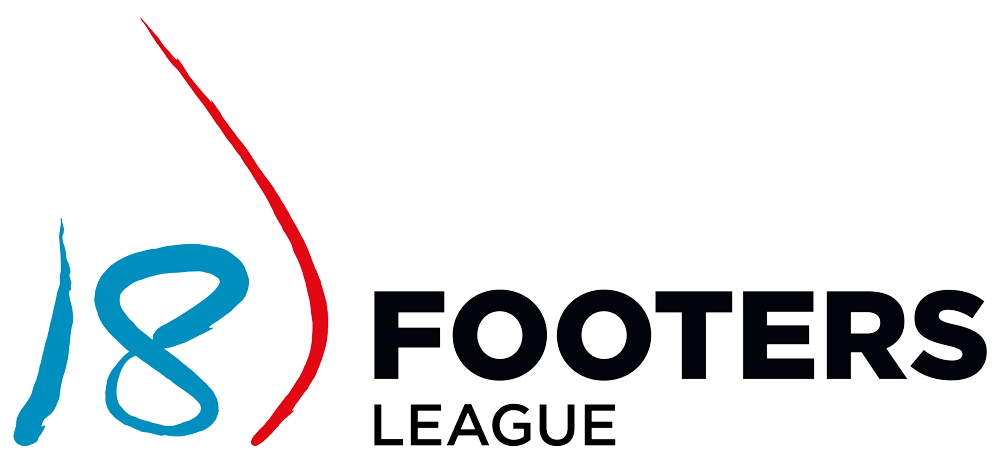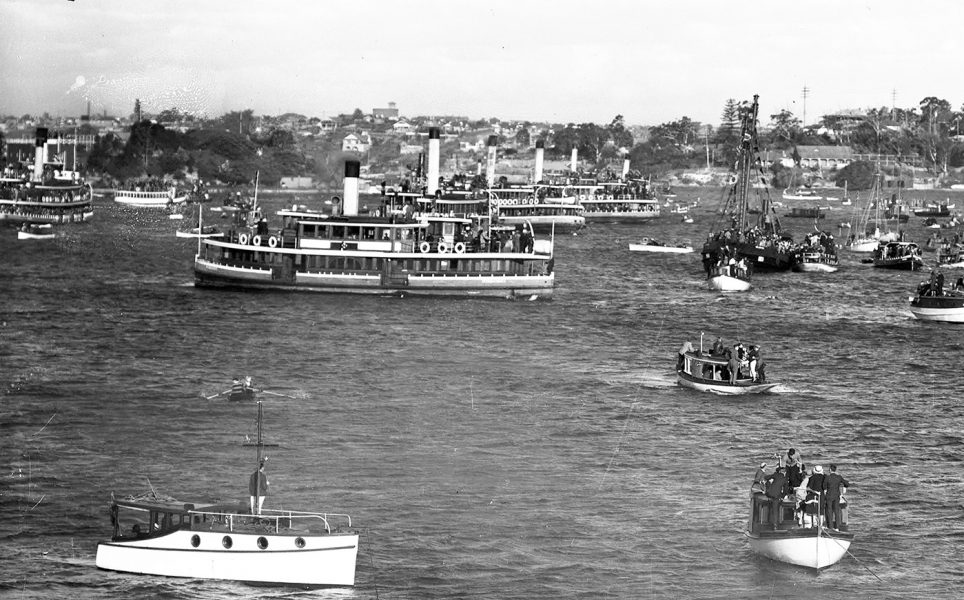The Australian 18 Footers League (formerly known as NSW 18 Footers League) has been conducting 18ft Skiff racing continuously for 87 years on Sydney Harbour since its first year of competition in the 1935-1936.
As we move towards the 2021-2022 season, it’s a good time to remember how the ‘League’ began and how the original club administrators generated the enormous public support that has endured.
Queensland were trying to introduce new rules to the 18s in the early 1930s as most of the Brisbane fleet was old, numbers had begun to dwindle, and owners were reluctant to replace their boats, due to rising costs during The Great Depression, together with the difficulty of maintaining big crews.
Frederick Hart was in Sydney at the 16 footer Australian championship in 1932 when he claimed that Queenslanders could build a new style 18 footer that would beat the Sydney boats. Naturally, this brought about an immediate challenge so he went back to Brisbane to build his ‘miracle boat’, which he named Aberdare.
Criticism always accompanies dramatic change and it was no different after Aberdare appeared for the first time during the 1932-1933 Brisbane season. Aberdare easily won the Queensland selection trials for the 1932-33 Australian Championship, and arrived in Sydney with a big reputation.
All interstate championships at that time were decided by a single race. The light southerly wind that year didn’t suit the smaller sail area of Aberdare, which finished only third behind two Sydney boats, but Aberdare showed enough potential to impress several Sydney sailors enough to want to build a similar type of boat.
One Sydney owner, Bob Cuneo, had a similar boat built, named The Mistake, and applied to have it registered at the Sydney Flying Squadron. The registration had to be granted as there was no rule preventing the new style of boat.
Once the registration was granted, there were more applications for other similar new boats, but the Sydney Flying Squadron voted to have them debarred, and closed its register.
A split had also appeared within the Brisbane ranks as owners of the older style boats reacted to the Brisbane 18 Footers Sailing Club’s acceptance of the new style boats. Tension was also extremely high between the Brisbane club and the Sydney Flying Squadron, which had already shown its hand as a non-supporter of the Aberdare-type boat.
Late in 1934, the SFS decided to terminate its agreement with the Brisbane 18 Footers Sailing Club and announced its withdrawal from the 1934-1935 Australian Championship. It became a decision which changed the face of 18 footers racing in NSW forever.
An increasing number of Sydney enthusiasts wanted the new style boats and were unhappy about the SFS’s decision not to compete at the 1935-1935 championship. Led by the former SFS President, James J. Giltinan, a meeting of those unhappy enthusiasts was held at the NSW Rugby League’s Club to ensure the future of interstate championships.
Following the meeting, the resulting new club NSW 18 Footers Sailing League (now known as the Australian 18 Footers League) announced that it had made an agreement with Brisbane 18 Footers to stage the Australian 18 foot Championship as its first event on Sydney Harbour.
The Sydney Flying Squadron was livid and immediately took action to expel the so-called ‘traitors’ from the club, and the ‘League’ first race was Race 1 of the 1934-1935 Australian Championship on February 3.
Aberdare easily retained her title, with victories in the first and third races of the championship, which was an unqualified success and gave the new organisation the confidence to move forward at a brisk pace to secure the future.
The club decided to stage its races on Sunday, leaving the SFS to continue to hold their races on Saturday, which was a ‘master stroke’ as all other sporting events at the time were being staged on a Saturday. Sydney sports enthusiasts, who had previously had nothing to support on Sundays, quickly accepted the new event and spectator ferries carried large crowds each Sunday.
Attendances were unprecedented and up to seven ferries were hired each Sunday to accommodate the crowds.
The entrepreneurial skills of the League’s first President, James J. Giltinan, were evident from the beginning of the 1936-1937 season when he had each boat carry a jockey in a race. The move attracted non-sailing punters out onto the water and it was reported that “more than 4000 people had watched the race.”
The club claimed to have had a total attendance of 58,469 people for its fifteen races that season.
Smart marketing plus the novelty of being able to follow an exciting sport on a Sunday was obviously a winning formula but it also brought along an added bonus of attracting the horse racing fraternity who wanted to have a bet on a day which had previously been unavailable to them. Sunday racing also attracted new skippers and crew from the 12ft skiff and 16ft skiff classes who were now able to sail their own boats on Saturday and get into the 18s on Sunday.
In 1937, Mr. Giltinan sent letters of invitation to interested parties in England, USA, China and New Zealand, to compete in a series of races on Sydney Harbour to celebrate the 150th Anniversary of New South Wales in 1938.
Due to the unstable WW2 situation at the time, only New Zealand finally accepted the invitation and sent a team of four boats to compete against four Queenslanders and twelve from the NSW League fleet.
The three-race championship was raced in a variety of moderate wind conditions, although Race 2 was interrupted when “a series of terrifying claps of thunder and sheets of lightning preceded the 60-mile gale that swept the harbour into a mass of tumbling white-crested waves” which took out all but nine of the competitors.
The original championship regatta in 1938 was a huge success, which The Sydney Morning Herald newspaper described on the day following the first race,“The grip that 18 footer sailing has on the Sydney community was clearly demonstrated yesterday when a record crowd watched Taree win the first heat of the world championship on the harbour.”
“The crowd at Circular Quay was so large that extra steamer accommodation had to be provided at the last moment, while craft of almost every conceivable description were in attendance. The foreshores, particularly Bradley’s Head and Steel Point, were thronged with spectators.”
The amazing success of the League and the championship is best summed up by League President Horwitz’s statement at the beginning of the 1938-1939 season.“There can be no doubt that the modern type 18-footer appeals to the sporting instincts of every Australian as is evidenced by the fact that our patrons increase in numbers as each season progresses. Two seasons ago we felt proud of being able to record 150,000 patrons for the season. Last season (1937-1938) we were just under the 200,000 mark.”
The opening day’s racing for the Australian 18 Footers League’s new season is scheduled for Sunday, October 10 (Covid-19 restrictions pending) when a fleet of up to 18 boats will face the starter.
Among the top contenders again this season are the JJ Giltinan world champion Smeg team, led by Michael Coxonn, and Australian champion Tech2 team, led by Jack Macartney.
Frank Quealey
Australian 18 Footers League

